“Counter-iconoclasm at the Intersection of Discrepant Body and Soul”
This project utilises Unit XX methods of collage, resurrection, reinterpretation, juxtaposition and misremembering to explore notions of memory, iconoclasm, counter-iconoclasm, recall and preservation within the city of Berlin.
The thesis focuses on Detlev-Rohwedder-Haus, a 1930’s fascist urban artefact with deep routed pathological permanence, as defined by Aldo Rossi, and the vacant plot of land directly opposite it. The architectural response walks a thin line between preserving a resilient emptiness of 42-58 Wilhelmstraße and all that its stillness embodies, and challenging the unrelenting aggression that overbears it.
The proposed response is a combined work, sitting alongside Detlev-Rohwedder-Haus, as an act of architectural counter-iconoclasm. The urban dialogue across Wilhelmstraße questions an inanimate buildings role in a regimes crimes and asks about its right to opportunity to move on from its past. Into this act, it layers the spirit of the Palast, an agent for a change in the dialogue between Detlev-Rohwedder-Haus and the city.
The proposal speaks to Peter Eisenmann’s play on the well-known phase; there’s an elephant in the room, and sometimes “the elephant is the room”. The thesis seeks to highlight that there is a danger that if we are not sometimes able to be objective about accepting that the past is the past, we face the prospect of demolishing all that offends the current world view and enacting a policy of “coming to terms with the past with a wrecking ball”.
The Iconography Embassy captures the disembodied spirit of the Palast, its ambition, and its moments of joy, and combines them with the ghosts of Germania and allied bombing runs to reject the wrecking ball as a tool for forgetting. In an act of architectural counter-iconoclasm, it enables Detlev-Rohwedder-Haus an opportunity to move on. It recalls the buildings past and allows it to react to something more than emptiness. The proposed is a building to be in dialogue with it, to help accept its wrongs and respect the fact that in the end, stones do not stand for the same values as their creators.
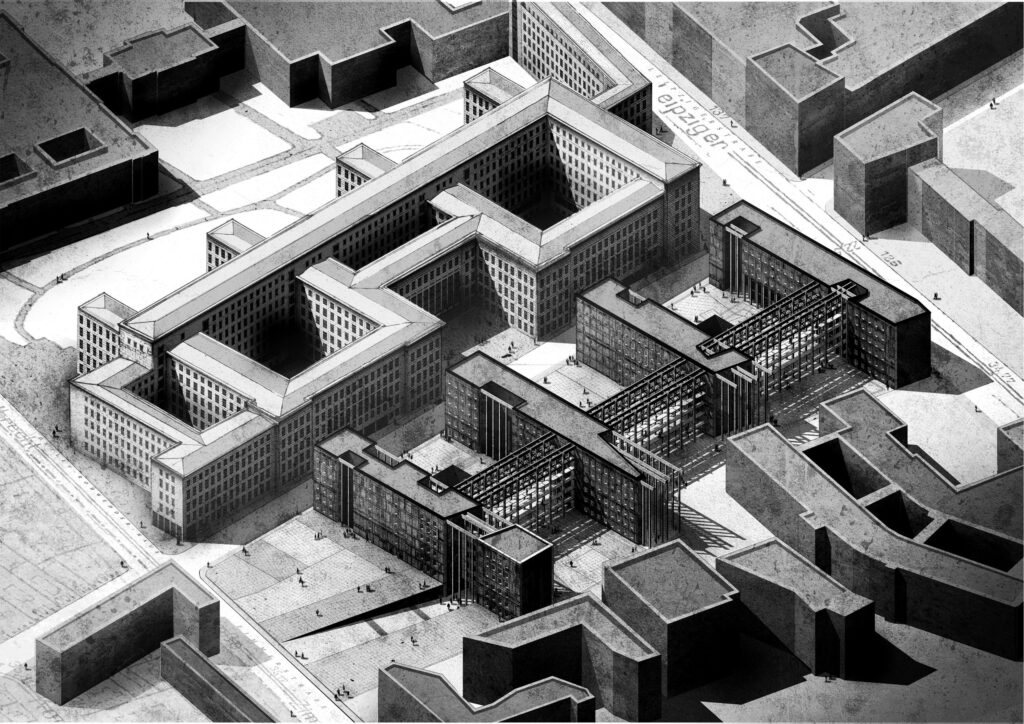
Large Axonometric showing City Scale Intervention
The proposal is a rejection of the wrecking ball as a tool for forgetting. It is an act of Counter-Iconoclasm which enables Detlev-Rohwedder-Haus an opportunity to move on. It recalls its past with understanding and compassion, and allows the former Reich Air Ministry something more than emptiness to react too. The proposal is a building in dialogue with the existing, without every touching it physically. It is a combined work, across Wilhelmstraße, placed to help accept wrongs and respect the fact that in the end, stones do not speak for those that created them.
Image shows the city scale intervention located along Wilhelmstraße in Berlin Mitte.
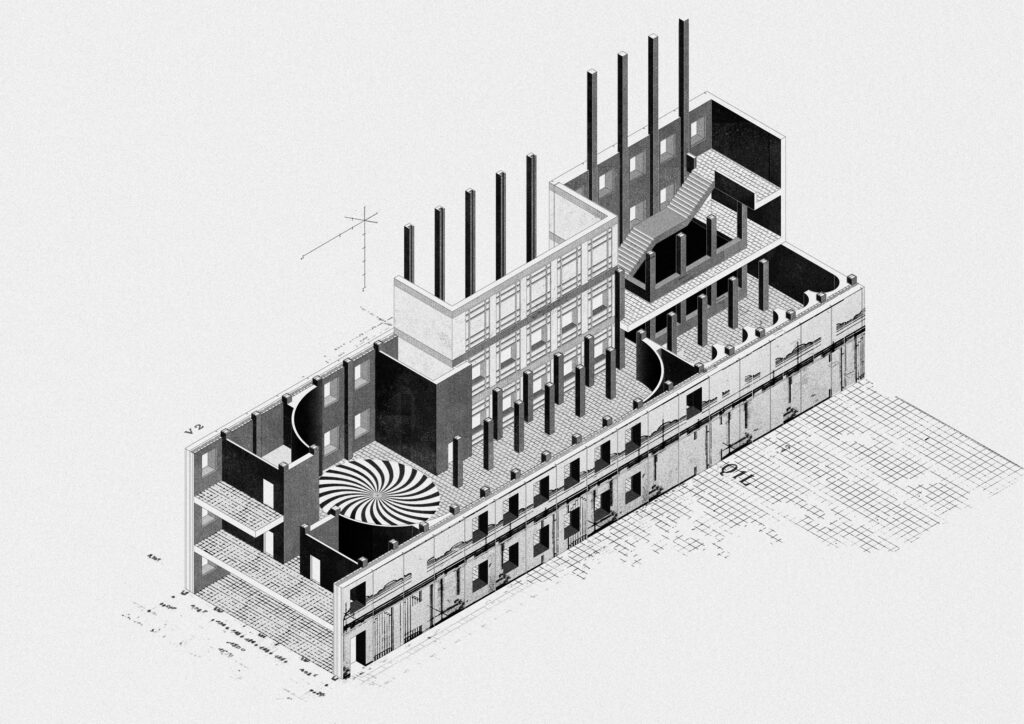
Axonometric of the Palast Discotek Space
“The building gave East Germans an identity, in a positive sense,” … and although the Palast symbolized a repressive regime, he argued, it was primarily seen as a place for everyday activities: eating, dancing and celebrating family occasions. “Eighty percent of the people I spoke with from the former G.D.R. told me they loved this building.”
Symbol of a Brutal Regime? Or a Fun Place to Party?, Thomas Rogers
The building proposes the reinterpretation and reconstruction of several of the rooms from the Palast der Republik, providing a new body for the disembodied spirit of the place and as a way to remember the long-deceased building.
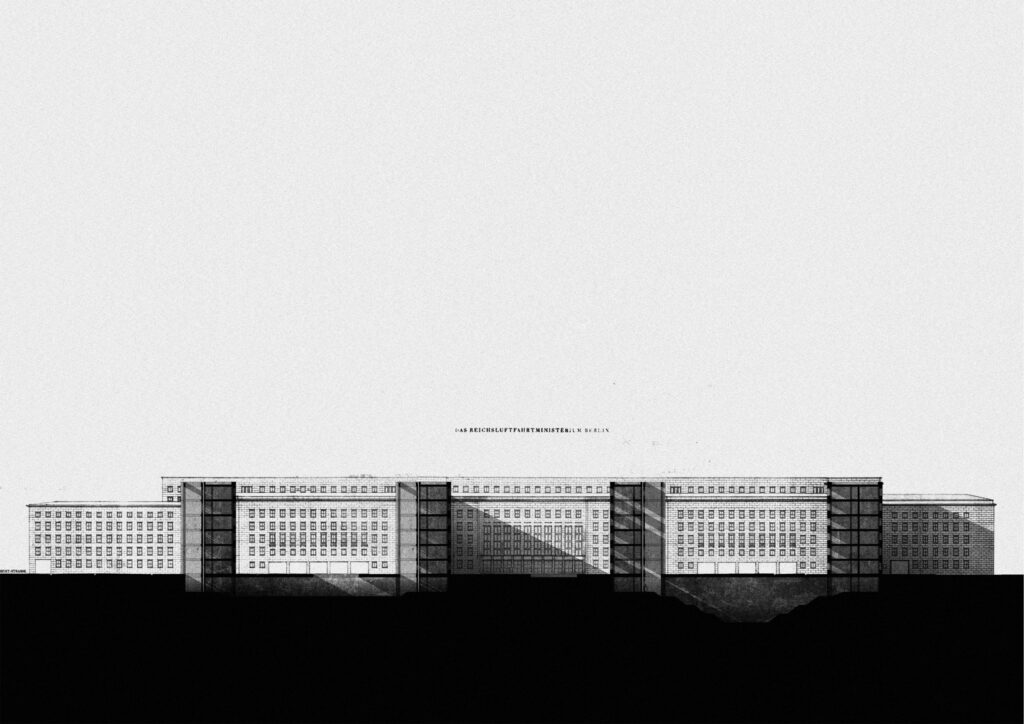
Masterplan Section
In this masterplan section taken North to South across the site, the four above ground forms are seen standing to face Detlev-Rohwedder-Haus, with the connecting basement below. This is a pure exploration of the idea of counter-iconoclasm. If, as defined by Adrian Forty in The Art of Forgetting, iconoclasm is the destruction of something to enable its forgetting, counter-iconoclasm is forgetting through rebuilding. The base form of the building is a rebuilding of a collection of ideas, to form a new whole.
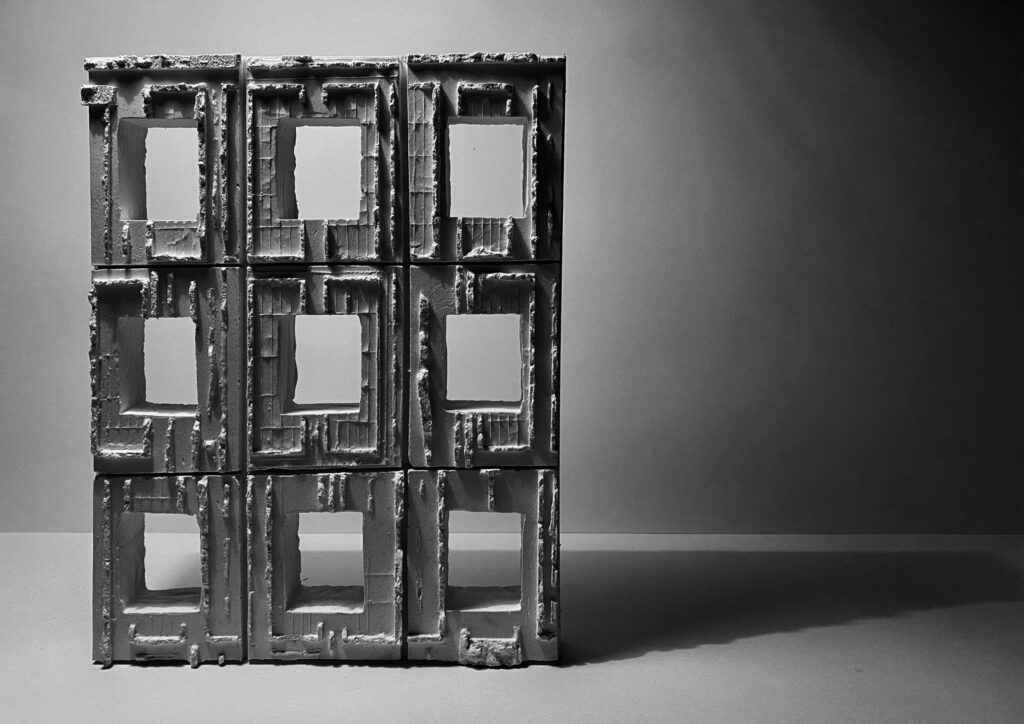
Facade Model
The proposed façades act to both recall and preserve the buildings purest initial intent. Taking inspiration from Clare Copleys ‘Stones do not Speak for Themselves’, the façades questions Detlev-Rohwedder-Haus’ Architect, Ernst Sagebiel, a man supposedly pressured into working for Goring, drawing skills. The line drawings used to construct the building are inanimate and have no agenda, and whilst it was built by an appalling and oppressive regime, nor does the building. In an act of preservation, provocation and celebration, the internal room elevation drawings are inverted and cast into the external concrete walls.
Model showing the Act of Preservation, Provocation and Celebration, 1:50 Plaster Cast of Proposed Elevation
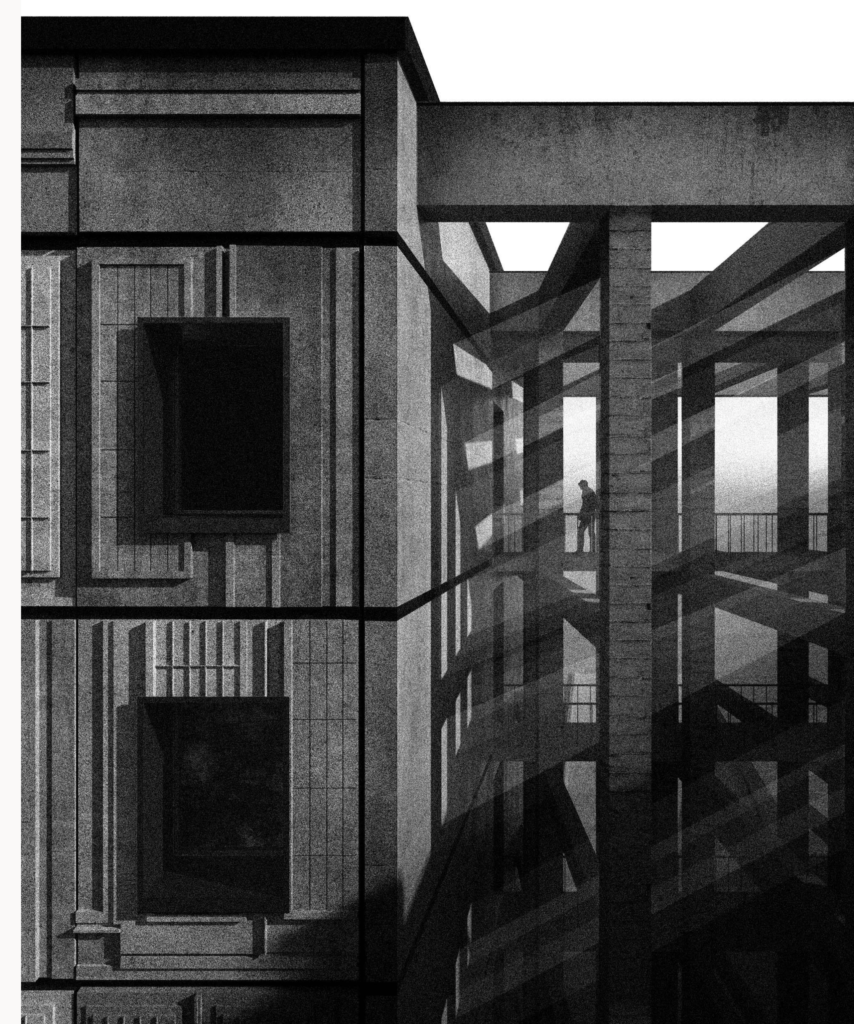
Composition of Column, Beam, Bridge and Façade
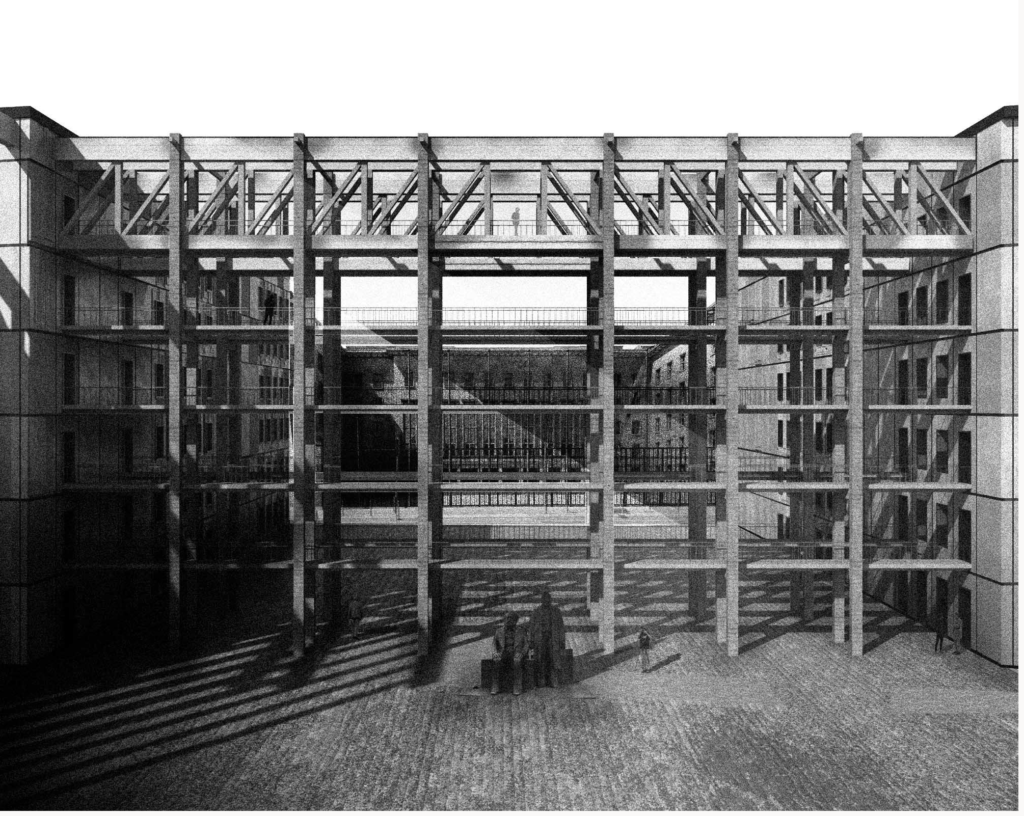
Counter Iconoclasm as Architecture, Resurrecting the Palast der Republik Spirit of Community
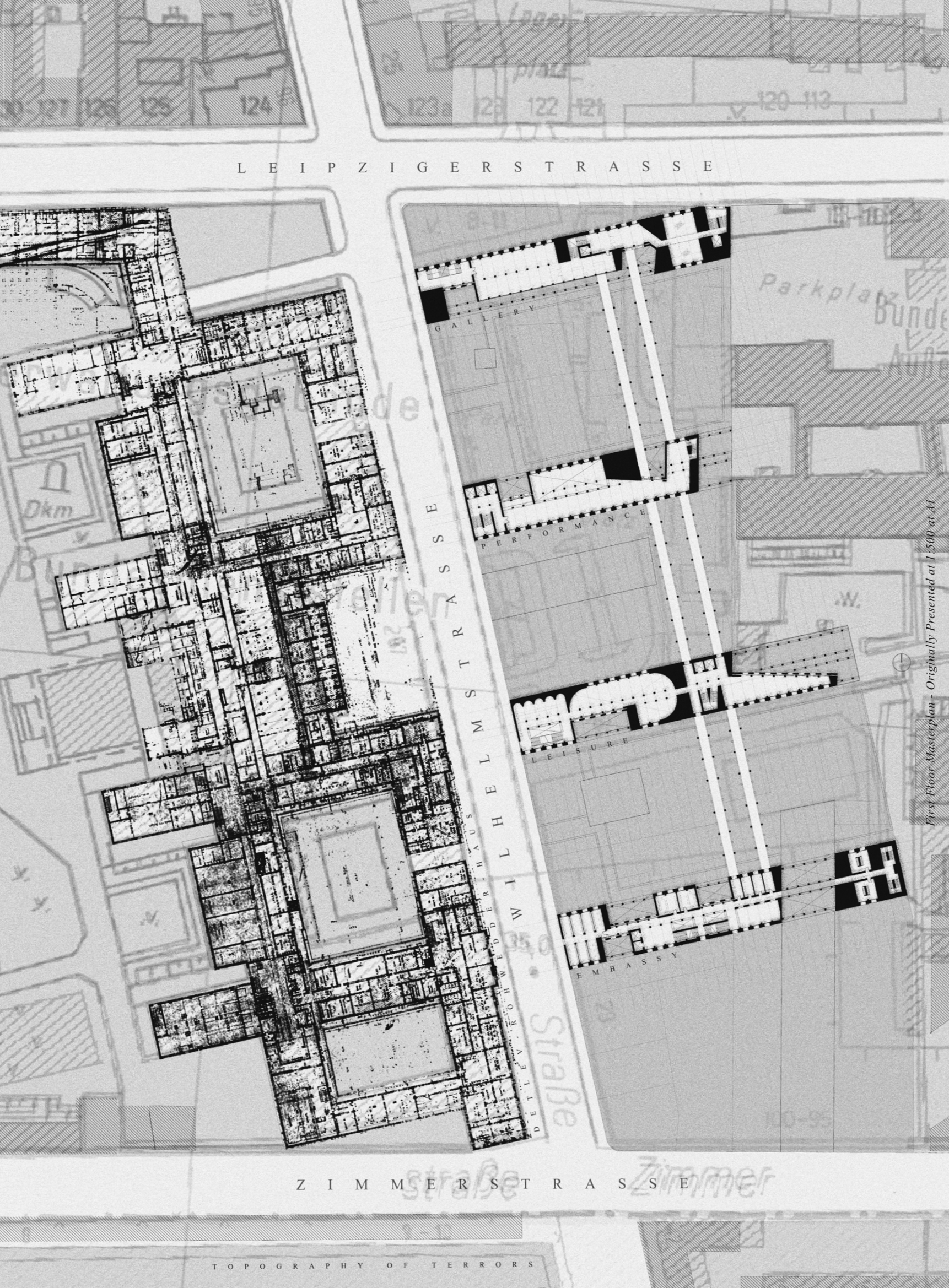
Ground floor plan: In a state of constant decay, rebirth, remembrance, confrontation and destruction, notions of an architectural counter-iconoclasm begin to emerge.
CONTACT EMAIL: ollie.burchell@btinternet.com
LINKEDIN: https://www.linkedin.com/in/oliver-burchell-20b909107/
Curated by Andreea-Ioana Ciutac
